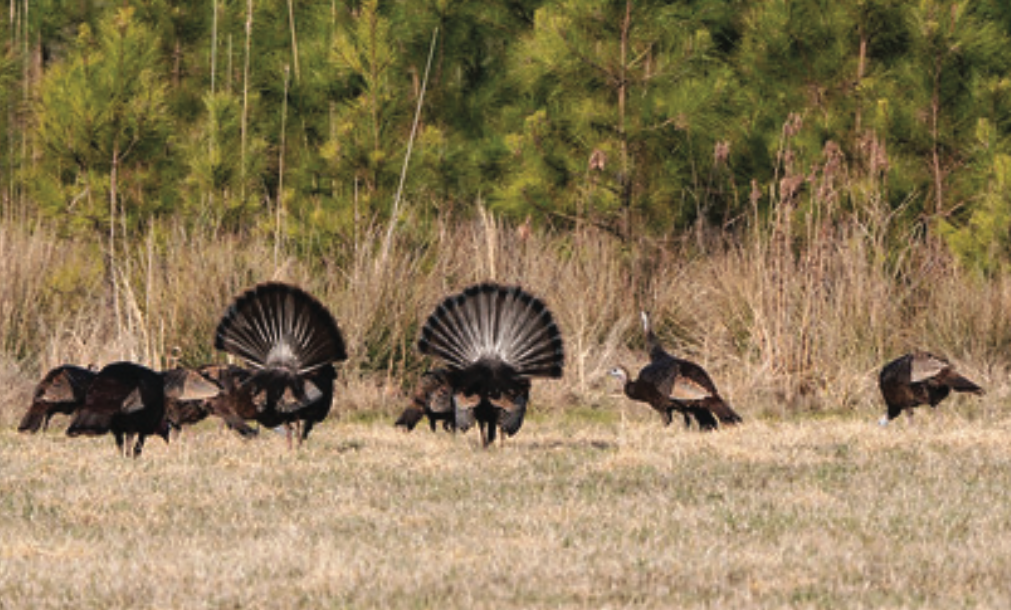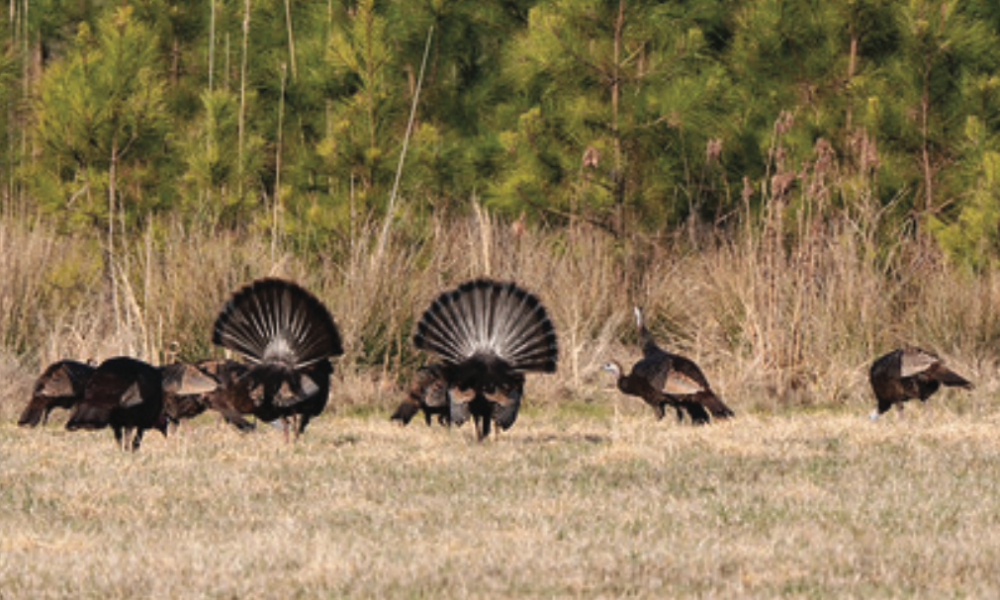
This winter, the Maryland Department of Natural Resources (DNR) is kicking off the first comprehensive study of wild turkeys ever conducted in the state.
State officials say the three-year research project aims to answer “many questions about factors potentially impacting turkey populations.”
“Wild turkeys are an important game bird in Maryland,” Wildlife and Heritage Service Director Paul Peditto said. “The results of this study will help inform management decisions and ensure turkey populations remain healthy going into the future.”
Beginning this month, wild turkeys will be captured and outfitted with leg-bands and/or GPS radio-transmitters.
DNR staff will monitor the birds throughout the year and collect data on survival, reproduction, movements, and habitat use. The effects of weather, habitat, predators, disease, and hunter harvest will all be investigated by the research team, said the DNR in a press release.
The department is asking the public to help by reporting any turkey flocks they see during the winter.
Although turkey populations have increased in Maryland in the past 50 years due to an effort to restore birds to their historic range, surveys suggest that their numbers have declined from their peak in some areas.
DNR officials said their annual Summer Wild Turkey Observation Survey has documented a general decline in wild turkey reproduction the past several decades, particularly in areas that were previous turkey strongholds.
Spring turkey harvests have dropped in some areas as well. Similar trends in other states throughout the U.S. have prompted numerous studies to investigate potential causes.
This research will be conducted across multiple states and partners, including the Pennsylvania Game Commission, New Jersey Division of Fish and Wildlife, Penn State University, University of Pennsylvania, and the National Wild Turkey Federation.
Data will be collected at sites throughout the mid-Atlantic region to allow comparisons among areas with different landscape characteristics, providing an avenue to learn even more about the birds.
More information about the project can be found on the DNR website.


